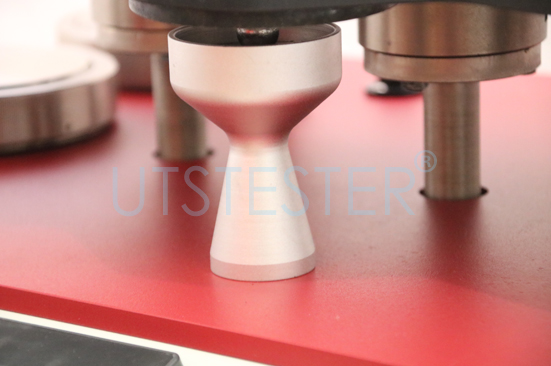 +86 152 6060 5085
+86 152 6060 5085
 +86 152 6060 5085
+86 152 6060 5085
Blog
Catalog
Latest Blog
1. Fabric characteristics:
The basic cause of pilling is mainly related to the fabric chosen. Nature of the fiber has a great influence on the fabric pilling, especially fiber mechanical properties, in addition, the fiber length, fineness, and the morphology and surface properties of fabric pilling also has great relationship. Yarns are made of various types of fibers that are twisted and folded. The fibers that make up yarns should be of uniform length. The uneven length of the fibers that make up the yarn is easy to cause pilling.
Chemical fiber easy pilling, pilling degree of polyamide > acrylic > polyester. High strength of chemical fiber, high flexural property, resulting in the fiber is not easy to fall off, in the textile surface wrapped into a ball. Polyester and cotton fabrics are also prone to pilling. Due to the high strength of polyester fiber, it is difficult to shed polyester cotton when it is entangled with the wool feather of cotton fiber, thus forming the phenomenon of pilling that we have seen.
Short fiber textiles and wool products have the common characteristics of pilling, the fabric first wool, wool gathered together to form pilling. Any short fiber can pilling, polyester short fiber pilling is the most serious. This is mainly due to the strength and flexural properties of polyester, so that the ball formed is not easy to fall off the fiber. Polyester staple fiber is rarely used alone, it is mixed with other fibers such as cotton, but the pilling is very strong. If it is made of polyester filament, it is not likely to rise from the ball, such as the fabric of down jacket, general jersey and other sports fabrics are long silk. Because of the low strength of the cotton fiber, the hairiness has come off before it is tied together, so we can't see its pilling phenomenon.
Textiles with low twist of yarn are easier to pilling. Low twist can be understood as: the hemp rope is not tightly twisted. The low-twist yarns are not tightly bound, making the fabric softer and more comfortable, but the fibers are more likely to rub against each other and twist into balls.
It is easier to pille when the fabric structure is not tight. Knitted fabrics, by contrast, are more prone to pilling than woven fabrics. Fabric tightness: satin < twill > plain weave. Their pilling degree decreases successively. If the fabric is fluffy, less interwoven, long float, and the length of the knitted fabric's coil is long, it will increase the amount and length of pilling. In the same kind of fabric, the more tightly the structure, the less easy it is to pilling. In machine fabric, plain weave fabric has many interlacing points and the fiber is bound tightly, so plain weave fabric has less pilling phenomenon than twill fabric, and satin weave fabric is easier to pilling than twill fabric. Knitted fabric, when the yarn count and the length of the coil at the same time, the rib fabric than weft plain fabric pilling is serious, this is because although the stitch length is the same, but in the weft plain fabric coil number per unit area is more than the rib fabric coil (that is, the knitting point), its structure than the rib fabric. The structure is different, the surface flatness is different, the surface uneven fabric is easy to pick up the ball, such as jacquard fabric relatively easy to produce the phenomenon of pilling. In fact, no matter what the fabric of the clothes will rise from the ball, but different degrees of the ball.

2. Friction the electrostatic ball
Due to the poor moisture absorbability of some chemical fibers, static electricity is easy to be generated in the process of drying and continuous friction. The static electricity makes the surface feather of the short fiber fabric upright, thus creating conditions for pilling and pilling. For example, polyester static electricity is easy to absorb foreign particles to produce pilling.
Different types of textiles in the process of wearing, or fabric mix is not appropriate to rub each other easily ball. Reasonable collocation the clothings of different fabrics can avoid pilling to produce effectively, can consult the following tie-in proposal: denim fabric is pure cotton fabric, pure cotton fabric is one of the fabrics with best antistatic performance. Wearing jeans with single product can reduce static electricity and effectively avoid pilling. Tiansi is a regenerated cellulose fiber, good moisture absorption, static electricity will quickly pass away. So the choice of a single product containing tiansi can also have a good anti - static effect. Flax is the noble in fabrics all the time, wear portable and comfortable not only, more not easy to rise electrostatic ball, tie-in flax a sheet to taste will have the effect of reducing pilling.
3. Improper pilling during washing or daily nursing
Too long washing time is easy to cause fabric fiber damage, fiber break, increase the possibility of pilling; Excessive washing temperature (suitable temperature 20 ~ 45 degrees), incorrect detergent (recommended use of neutral detergent) and other factors may cause pilling. Proper care and clothing can reduce pilling.
Fabric pilling performance testing instruments mainly circular locus method pilling tester, rummaging around pilling tester, the rolling box pilling tester, martindale pilling tester and so on.
In addition, as a collection of r &d, manufacturing, sales, training, service in the integration of modern high-tech enterprises,UTS international co., LTD., is committed to the more advanced, humanized testing instrument continuously transport market, innovative technology leading industry, leading the country. More comprehensive acceptance of non-standard customization, before purchase can be in accordance with customer requirements for targeted testing, to ensure that the purchased instruments 100% applicable.
Email: hello@utstesters.com
Direct: + 86 152 6060 5085
Tel: +86-596-7686689
Web: www.utstesters.com